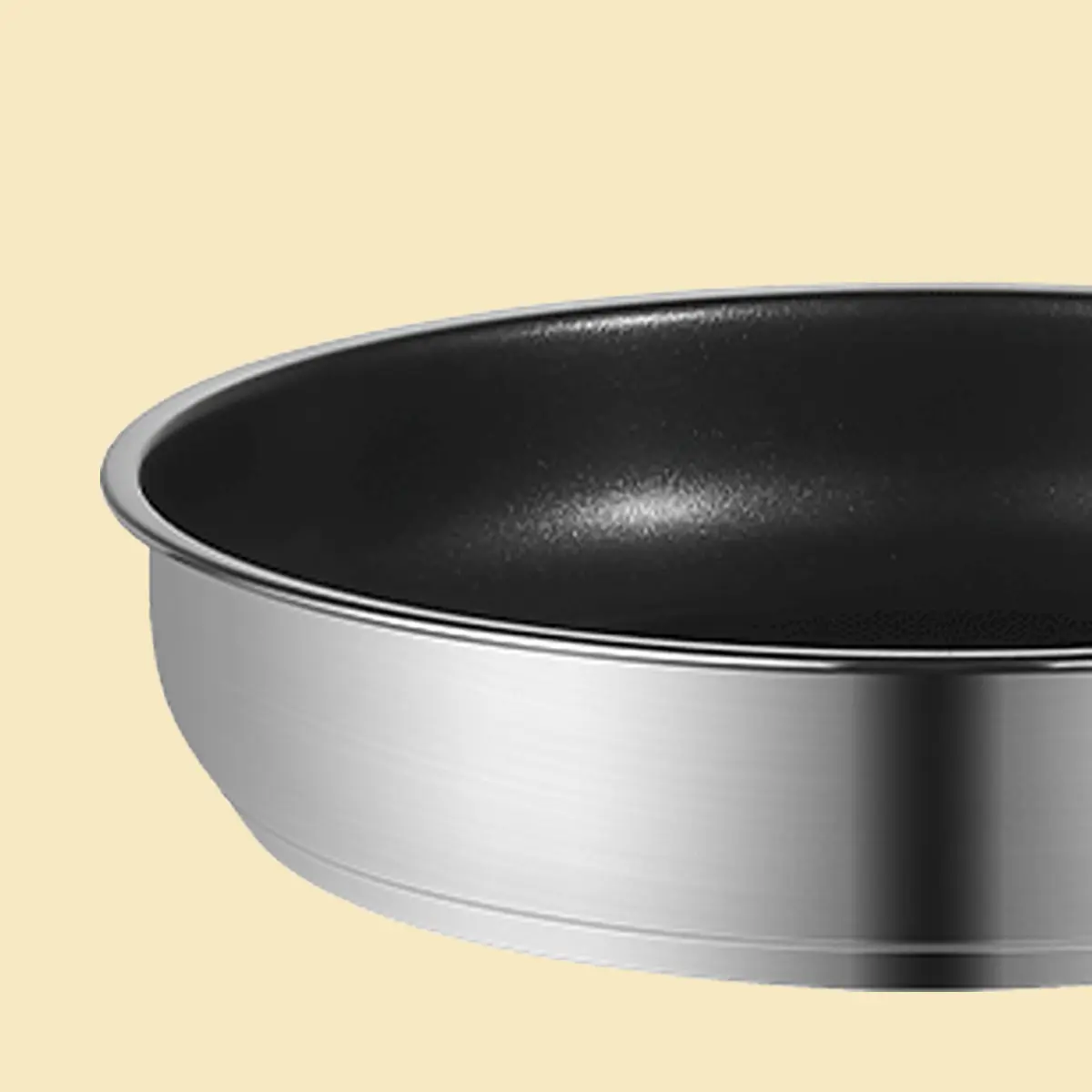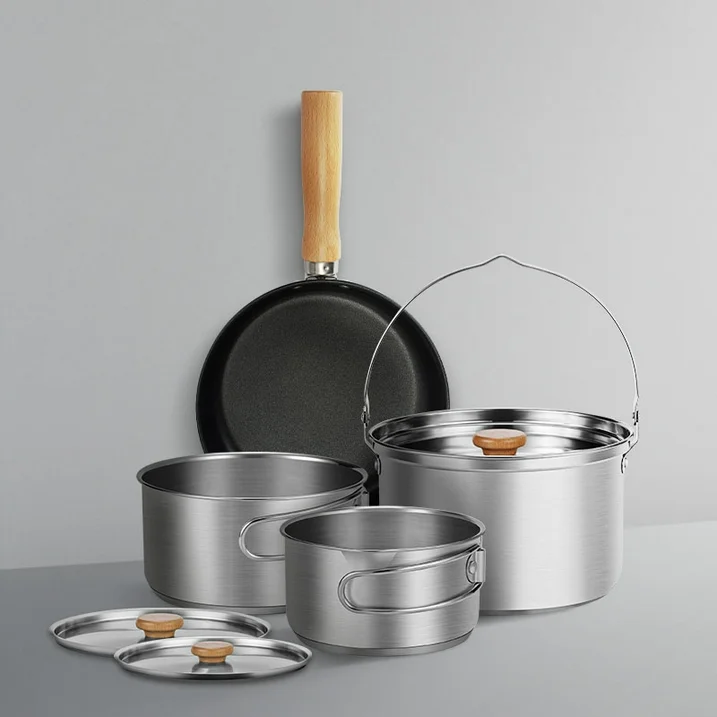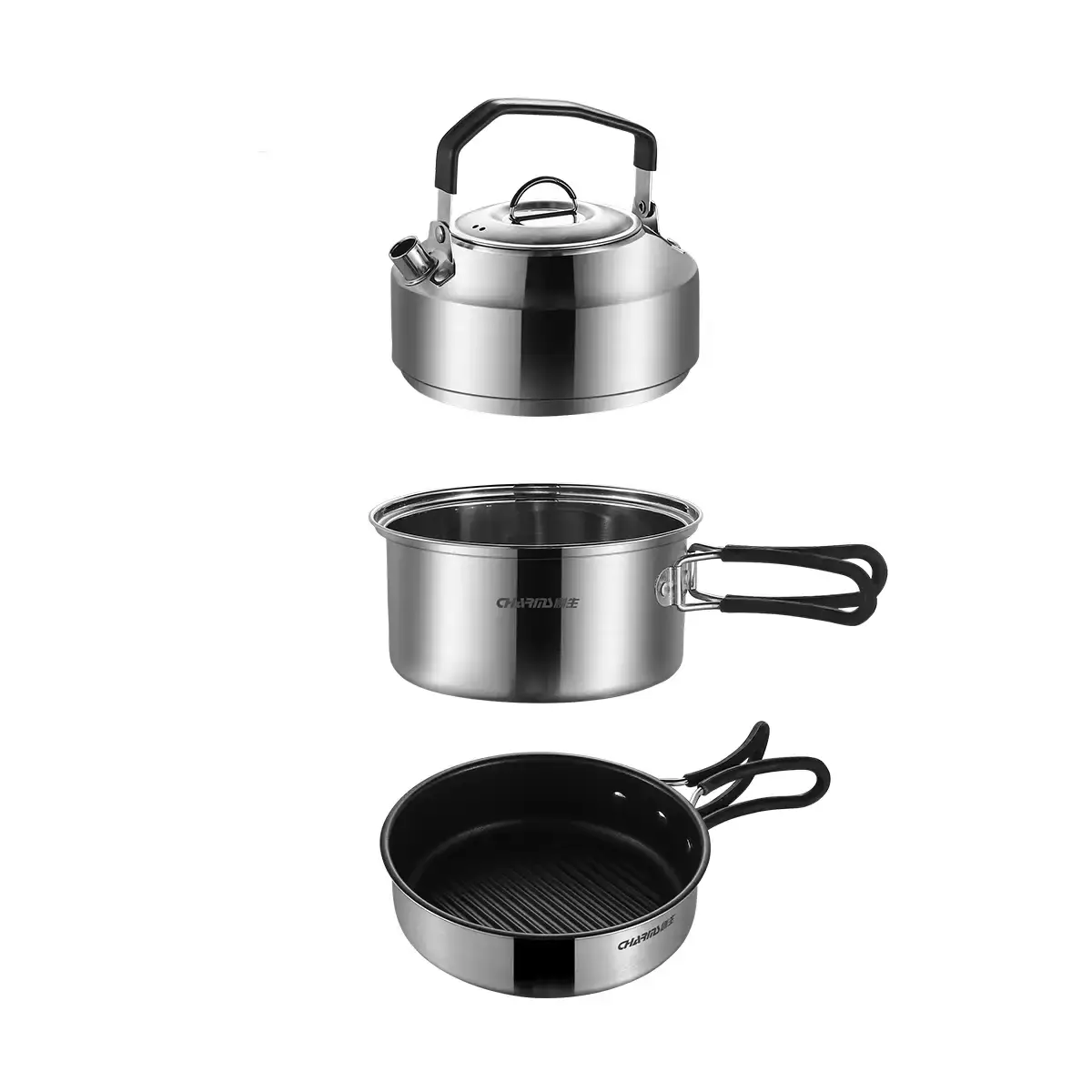When choosing the right stainless steel cookware, you should not only consider its appearance on the stove, but also its performance, durability and safety. As someone who has worked at Charms Cook for many years, testing, comparing and even designing stainless steel cookware, I have learned that the real difference between a good pot and a good pot usually lies in one detail: the grade of stainless steel.
Many home cooks and professionals are surprised to find that not all stainless steel is born the same. Behind every polished surface and smooth handle lies complex metals and exquisite craftsmanship, which determine the outstanding performance of your kitchenware day after day.
Let’s explore what makes certain grades of stainless steel superior, how they differ, and most importantly, how to choose the best stainless steel for your kitchen.
What Is Stainless Steel Cookware?
Stainless steel cookware refers to pots, pans, and utensils made primarily from an alloy of iron, chromium, and nickel, with occasional additions of elements such as molybdenum or carbon. The presence of at least 10.5% chromium forms a thin, invisible layer of oxide on the surface, protecting the metal from rust and corrosion.
Because stainless steel alone does not conduct heat efficiently, most high-quality cookware integrates a multi-layer (or multi-ply) construction. These layers often include aluminum or copper cores, which are excellent heat conductors. The stainless steel exterior provides durability, while the inner conductive layers ensure consistent cooking performance and eliminate hot spots.
Manufacturers such as CharmsCook apply advanced bonding techniques to combine these materials. The result is cookware that maintains strength, resists warping, and distributes heat evenly across all cooking surfaces.

How Is Stainless Steel Graded?
Stainless steel grades are categorized based on their chemical composition and mechanical properties. The most common classification systems are maintained by the American Iron and Steel Institute (AISI) and the Society of Automotive Engineers (SAE).
Each grade, represented by a numerical code (e.g., 304, 316, 430), defines the specific ratio of elements used. These differences determine the material’s resistance to corrosion, strength, ductility, and overall performance in high-heat environments.
Key Alloying Elements and Their Roles
-
Chromium (Cr): Provides corrosion and oxidation resistance. Essential for forming the protective stainless layer.
-
Nickel (Ni): Adds flexibility, strength, and resistance to acidic or alkaline environments.
-
Molybdenum (Mo): Enhances resistance to salt and harsh chemicals.
-
Carbon (C): Increases hardness and tensile strength.
-
Iron (Fe): Serves as the structural base of the alloy.
Different combinations of these elements result in grades suited for various applications—from marine environments to professional kitchens.
Which Grades of Stainless Steel Are Most Commonly Used in Cookware?
Not all stainless steel grades are appropriate for cooking applications. The most widely used grades for cookware are 304, 316, and 430, each offering distinct benefits depending on usage requirements.
Grade 304 (18/8 or 18/10 Stainless Steel)
Grade 304 is the most common stainless steel used in cookware manufacturing. It typically contains 18% chromium and 8–10% nickel, often labeled as 18/8 or 18/10.
This composition offers excellent corrosion resistance, high strength, and a smooth, non-reactive surface. Because of its ability to maintain purity and not react with food acids, 304 is preferred for sauté pans, saucepans, stockpots, and mixing bowls.
Its high nickel content also gives it a lustrous, mirror-like finish and superior durability, making it one of the most balanced choices for both residential and commercial kitchens.
Grade 316 (Marine Grade Stainless Steel)
Grade 316 stainless steel, also known as marine-grade, includes 2–3% molybdenum, an element that significantly enhances resistance to salt, acids, and corrosion.
This grade is ideal for environments with high humidity, exposure to acidic ingredients, or frequent use with saltwater. In cookware, 316 provides exceptional protection against pitting and deterioration—making it a premium option for professionals and chefs who value longevity and consistent performance.
Due to its superior corrosion resistance, it is often used for high-end cookware lines designed for demanding culinary applications.
Grade 430 (18/0 Stainless Steel)
Grade 430 stainless steel contains approximately 18% chromium and no nickel, which reduces corrosion resistance but introduces magnetic properties. This makes it compatible with induction cooktops, an essential feature in many modern kitchens.
It is commonly used for the exterior base of cookware, paired with an inner layer of 304 or 316. The combination provides induction capability while maintaining the benefits of higher-grade stainless steel on the cooking surface.

Why Does Stainless Steel Grade Matter for Cookware Quality?
-
Corrosion Resistance: Higher-grade steels resist rust, pitting, and staining even after years of use and repeated cleaning.
-
Food Safety: Non-reactive grades such as 304 and 316 ensure that food flavor and nutrients remain unaltered during cooking.
-
Durability: Stainless steel with optimal chromium and nickel content resists warping and deformation at high temperatures.
-
Heat Distribution: Premium grades maintain structural integrity even in multi-ply designs, ensuring consistent heat spread.
-
Compatibility: Some grades, such as 430, offer magnetic properties required for induction stovetops.
Choosing the appropriate grade ensures long-term performance, safety, and visual appeal in cookware used daily.
Performance Comparison of Stainless Steel Grades
| Grade | Composition (Cr/Ni/Mo) | Corrosion Resistance | Durability | Magnetic | Typical Application |
|---|---|---|---|---|---|
| 304 (18/8 or 18/10) | 18% Cr, 8–10% Ni | Excellent | High | No | General-purpose cookware |
| 316 (18/10 + 2–3% Mo) | 16–18% Cr, 10–14% Ni, 2–3% Mo | Superior | Very High | No | Premium cookware, acidic dishes |
| 430 (18/0) | 17–18% Cr, 0% Ni | Moderate | Medium | Yes | Induction-compatible bases |
| 201 (16/3) | 16–17% Cr, 3–5% Ni | Fair | Low | Yes | Budget cookware |
| 410 (13%) | 11.5–13.5% Cr | Low | High (but rust-prone) | Yes | Cutlery, utensils |
This comparison highlights why 304 and 316 stainless steel dominate professional cookware production. They offer a superior balance of durability, resistance, and aesthetics without compromising safety or longevity.
How to Choose the Right Stainless Steel Cookware
Selecting cookware requires an understanding of how different grades align with specific cooking styles, environments, and equipment.
1. Everyday Cooking
For general use in residential kitchens, 304 stainless steel provides an excellent balance between performance and affordability. When combined with tri-ply or five-ply construction, it ensures even heat distribution and long-term resilience.
2. Professional or Intensive Use
In commercial kitchens or for users who frequently prepare acidic dishes such as tomato-based sauces, 316 stainless steel is recommended. Its enhanced molybdenum content prevents corrosion and pitting even after prolonged exposure to acidic ingredients.
3. Induction Cooking
Induction stoves require cookware with magnetic properties. Cookware that combines 304 or 316 interiors with 430-grade stainless steel exteriors provides the ideal solution—offering both performance and compatibility.
4. Long-Term Investment
Buyers should prioritize multi-ply stainless steel cookware from trusted manufacturers. Layers of aluminum or copper inside stainless steel shells ensure optimal heat conductivity without compromising the metal’s structural integrity.
5. Quality Verification
Cookware should always specify its stainless steel grade. Transparent labeling reflects manufacturing integrity and ensures that users can make informed choices based on performance expectations.

Which Stainless Steel Grade Is Best for Cookware?
The most suitable stainless steel grade depends on the intended use and budget. However, certain conclusions can be drawn based on performance analysis:
-
316 stainless steel is considered the premium choice, delivering unmatched corrosion resistance, especially for acidic or salt-heavy cooking.
-
304 stainless steel remains the industry standard due to its excellent balance of durability, cost, and performance.
-
430 stainless steel plays a supporting role, primarily for induction compatibility.
Many high-quality cookware manufacturers, including CharmsCook, combine these grades strategically. Multi-ply designs often feature an inner cooking surface of 304 or 316 stainless steel for safety and corrosion resistance, paired with an outer magnetic 430 layer for induction use. This hybrid construction offers both professional-grade performance and universal stovetop compatibility.
Conclusion
The grade of stainless steel defines the true quality of cookware. Grades such as 304 and 316 stand out for their strength, resistance, and non-reactive nature, while 430 provides additional versatility for induction cooking.
When selecting stainless steel cookware, attention to material grade ensures longevity, consistent performance, and food safety. Multi-ply construction, transparent material labeling, and proper alloy combinations are indicators of superior craftsmanship and engineering.
Brands like CharmsCook integrate these principles into every product, producing cookware that balances science, precision, and design. By using premium-grade stainless steel, CharmsCook ensures that each piece performs reliably, maintains its shine, and delivers exceptional results for years to come.




